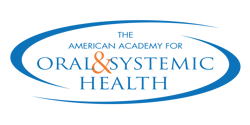Can You Sneeze Heart Disease?
Salivary Transmission of Pathogens
In a recent article by Jorgen Slots et al. (2011), the infectious risks of saliva containing pathogenic bacteria is discussed. Long recognized is the fact that saliva can contain potential pathogens in sufficient quantities to infect other individuals. The author sites the classic example of serious infection passed through kissing known as mononucleosis.[2] The American Academy of Periodontology (AAP) also reports in its statement on the Transmission of Gum Disease Between Family Members[3] that research suggests the bacteria that cause periodontal disease pass through saliva.
Salivary transmission can occur in a number of ways, which may include coughing, sneezing, sharing utensils or cups and kissing.
Transmission of putative periodontal pathogens between family members has been shown. Vertical transmission from parents to children and horizontal transmission between spouses occurs in up to 75% of cases depending on the specific pathogen.[4] Periodontal pathogens such as P. nigrescens, T. denticola, A. actinomycetemcomitans and P. gingivalis were shown to be found in the saliva of periodontally healthy children, suggesting bacterial transmissions through saliva from their caregivers.[5] Another study observed that children who tested positive for red complex bacteria (either Porphyromonas gingivalis, Treponema denticola, or Tannerella forsythensis) always had a mother who was positive for these red complex bacteria.[6]
Periodontal / Heart Connection
Although the word “causal” is only beginning to appear in the literature, it is well established that the presence of periodontal pathogens and disease is a risk factor for heart disease. The presence of periodontal pathogens, as well as a high total burden of pathogenic species are both associated with increased odds of having myocardial infarction.[7] Other studies showed that periodontal treatment could reduce serum inflammatory biomarkers such as C-reactive protein and even improve endothelial function.[8]
Recognize the Perio-Pod
A perio-pod is composed of two or more people that share or potentially share similar oral bacteria, pathogens and/or periodontal risk factors. Inclusion in a perio-pod may affect the periodontal treatment decisions or outcomes for an individual based on the profile of the group.[9]
Upon comparison of over 1,000 DNA-PCR bacterial profiles in my private practice between 2008 and 2011, I noted that groups of people who were closely related showed similar periodontal pathogens. Commonalities can often be seen in parents, spouses, children, and grandchildren. Below is an example of the presence of Tannerella forsythia in spouses and their three adult children. (Figure 1)
Future Strategies in Heart Health
Research should continue to elucidate the importance of periodontal disease and pathogens in the progression of heart disease. Salivary transmission of periodontal pathogens has been shown. Health care workers must be made aware that full mouth disinfection may reduce the risk for cross-infection of oral pathogens between individuals in close contact.1 The AAP recognizes that treatment of gum disease may involve entire families. If one family member has periodontal disease, the AAP recommends that all family members be screened.3 It appears hopeful that periodontal treatment could reduce the risk of coronary heart disease and therefore become one of the preventing strategies for heart disease.6
Be aware of the potential of the contagious nature of periodontal pathogens and their risk to people near to you. Understand that care may need to go beyond the individual. Remember to cover your sneeze into your elbow, as you may be saving others from more than just catching your cold.
Photo courtesy CDC / Brian Judd.
[1] Photo courtesy CDC/ Brian Judd.
[2] Slots J, Slots H. Bacterial and viral pathogens in saliva: disease relationship and infectious risk. Periodontol 2000. 55: 48-69, 2011.
[3]Transmission of Gum Disease Between Family Members. Amer Acad Periodontology Consumer Info. 2011, URL:http://www.perio.org/consumer/families.html. Accessed 2011-04-18.
[4] Van Winkelhoff AJ, Boutaga K. Transmission of periodontal bacteria and models of infection. J Clin Periodontol.32 Suppl 6:16-27, 2005.
[5] Kulekci G, Leblebiciogu B, Keskin F et al. Salivary detection of periodontopathic bacteria in periodontally healthy children. Anaerobe. 14(1):49-54, 2008 Feb.
[6] Lee Y, Straffon L, Welch K, Loesche W. The Transmission of Anaerobic Periodontopathic Organisms. J Dent Res85(2): 182-186, 2006.
[7] Andriankaja O, Trevisan M, Falkner K et. al. Association between periodontal pathogens and risk of nonfatal myocardial infarction. Community Dent Oral Epidemiol. 39(2):177-85, 2011 Apr.
[8] Ouyang XY. Association between periodontal disease and coronary heart disease. Beijing Da Xue Xue Bao.18;40(1):112-5, 2008 Feb.
[9] Jacobs P. Dental Nation - Perio-Pod. . 2011-04-18. URL:http://dentalnation.blogspot.com/2010/01/perio-pod.html. Accessed: 2011-04-18. (Archived by WebCite® at http://www.webcitation.org/5y3EgA7d2)
